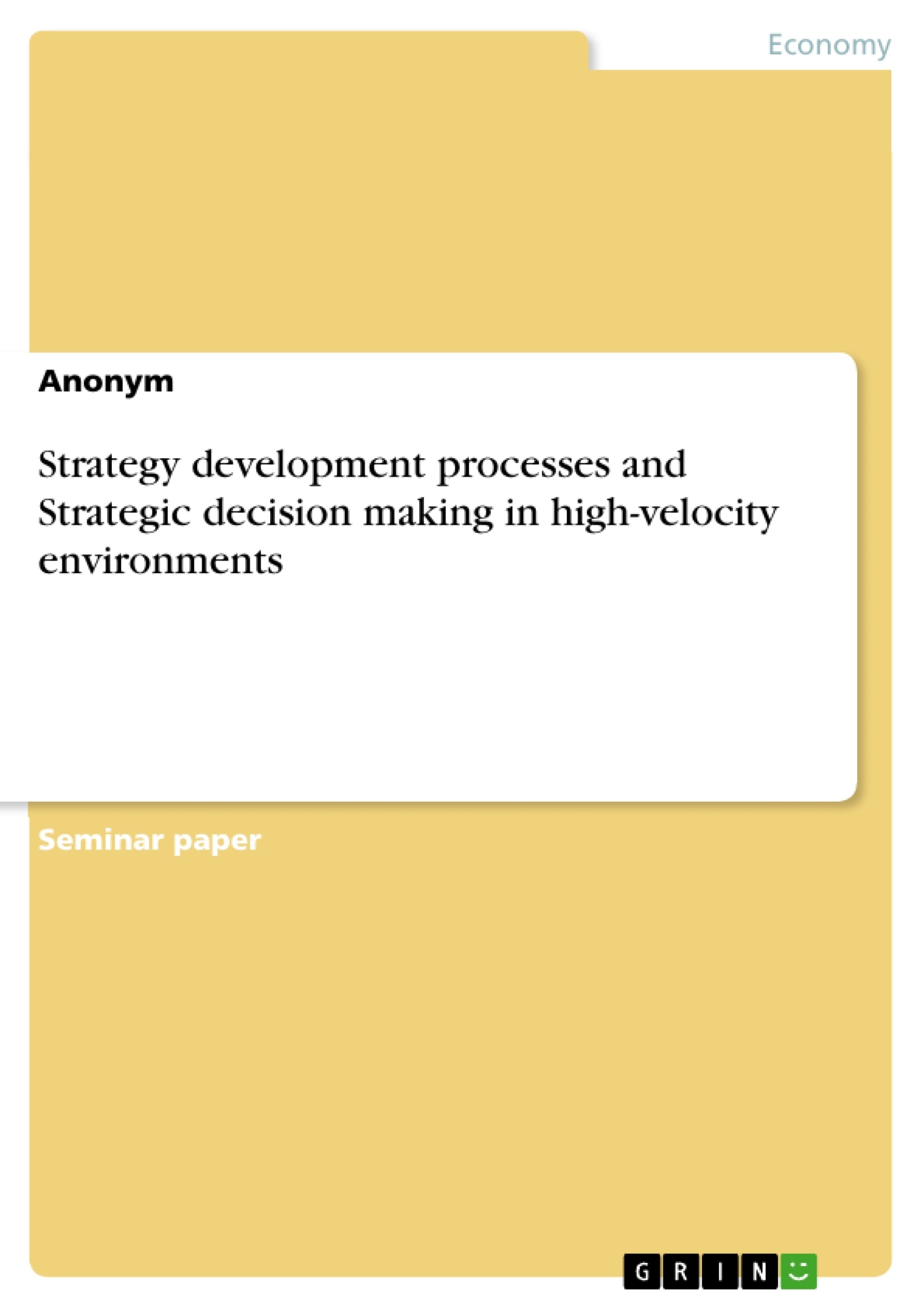Deliberate strategy, formal planning and the intention to create a detailed strategic plan (e.g. Porter) vs. an emergent strategy, which focuses on reacting to prevalent market changes (e.g. Mintzberg).
Strategy itself is an ambiguous concept with a multitude of questions to be considered, for instance, whether the process of strategic thinking should be predefined or rather an intuitive act. If Google, one of the most successful companies in the world, is taken as an example, it does not become any clearer what approach is recommended to follow, as the company decides to shut down products that seem popular, in order to invest in alternative projects. Have globalisation and economic deregulation created an environment too complex to be captured in a strategic framework?
This essay will first analyse strategy development processes with a focus on deliberate and emergent approaches, and secondly continue with a critical discussion about the applicability of these techniques in a high-velocity environment.
Finally this essay will provide managerial implications for an effective approach to strategy development. Taking Google as an example illustrates how a company achieves to integrate essential features from both, the deliberate and the emergent strategy, which bears strong resemblance to the most deliberate approach among those classified as emergent - logical incrementalism.
Inhaltsverzeichnis (Table of Contents)
- Introduction
- Strategy and its ultimate intention
- Literature review on strategic development processes
- Discussion on strategic decision making in high-velocity environments
- Quantitative versus qualitative data
- Forecasting and long-term planning
- Proactiveness challenges reactiveness
- Managerial implications
Zielsetzung und Themenschwerpunkte (Objectives and Key Themes)
This essay critically examines the effectiveness of deliberate and emergent strategy development processes, particularly in the context of high-velocity environments characterized by rapid change and uncertainty. The analysis aims to provide managerial implications for adopting an effective approach to strategy development in such dynamic circumstances.
- The strengths and limitations of deliberate and emergent strategy approaches
- The impact of quantitative versus qualitative data on strategic decision-making
- The role of forecasting and long-term planning in a high-velocity environment
- The balance between proactive and reactive strategies in achieving competitive advantage
- The influence of organizational structure and continuous innovation on strategy development
Zusammenfassung der Kapitel (Chapter Summaries)
- Introduction: This chapter introduces the ambiguous nature of strategy and the need to consider both deliberate and emergent approaches to strategy development, using Google as an example.
- Strategy and its ultimate intention: This chapter defines strategy as the determination of long-term goals, courses of action, and resource allocation, and highlights the importance of assessing strategy effectiveness through its impact on organizational performance.
- Literature review on strategic development processes: This chapter presents the contrasting perspectives of deliberate and emergent strategy development processes, outlining their advantages and disadvantages.
- Discussion on strategic decision making in high-velocity environments: This chapter delves into the challenges of decision-making in a rapidly changing environment, discussing the role of quantitative and qualitative data, the effectiveness of forecasting and long-term planning, and the importance of proactiveness versus reactiveness.
Schlüsselwörter (Keywords)
This essay explores key concepts related to strategic management, such as deliberate and emergent strategy, strategic decision making, high-velocity environments, quantitative and qualitative data, forecasting, proactiveness, and the role of organizational structure in achieving competitive advantage.
- Quote paper
- Anonym (Author), 2015, Strategy development processes and Strategic decision making in high-velocity environments, Munich, GRIN Verlag, https://www.grin.com/document/358844



